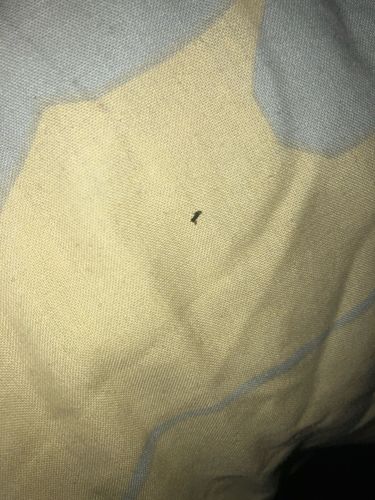Flea (likely a cat flea or dog flea due to common indoor presence)
Scientific Name: Ctenocephalides felis (Cat flea) or Ctenocephalides canis (Dog flea)
Order & Family: Siphonaptera, Pulicidae
Size: 1-3 mm (adults)

Natural Habitat
Fleas thrive in warm, humid conditions. They are commonly found on mammalian hosts (especially pets like cats and dogs) and in their bedding, carpets, upholstered furniture, and cracks in floors.
Diet & Feeding
Adult fleas are obligate hematophagous parasites, meaning they feed exclusively on the blood of their hosts. Larvae feed on organic debris, especially adult flea feces ('flea dirt').
Behavior Patterns
Fleas are excellent jumpers, using their powerful legs to quickly move between hosts or to new locations. They are attracted to warmth, vibrations, and carbon dioxide, which signal the presence of a host. Their life cycle involves four stages: egg, larva, pupa, and adult.
Risks & Benefits
Risks: Fleas can cause irritating bites, which may lead to allergic reactions (flea allergy dermatitis) in both humans and pets. They can also transmit diseases like murine typhus, cat scratch disease, and act as intermediate hosts for tapeworms (e.g., Dipylidium caninum). Benefits: None for humans or domestic animals; they are primarily considered pests.
Identified on: 10/3/2025